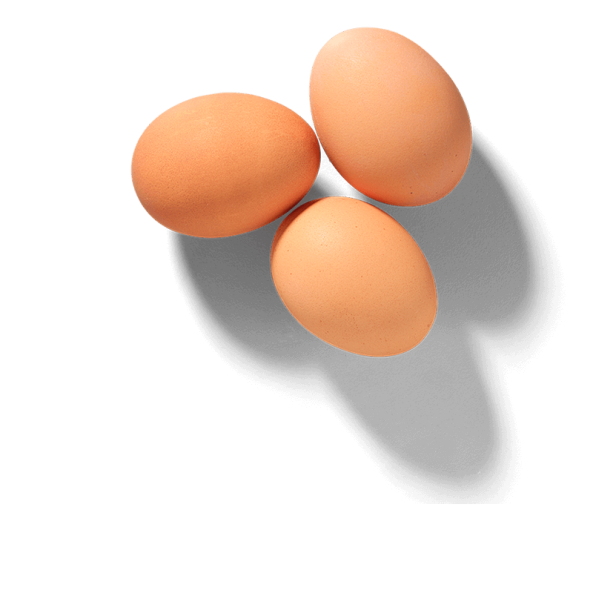July 12, 2021
Plasma: A Functional and Nutritious Ingredient in Pet Food

What is Plasma?
Plasma is an incredible component found in blood, packed with vital nutrients. When we separate blood cells and platelets from whole blood, we get a nutrient-rich clear fluid known as plasma. According to the Association of American Feed Control Officials (AAFCO), plasma is the part of blood that's been separated from the cellular matter like red and white blood cells. It primarily consists of protein-rich compounds such as albumin, globulin, and fibrinogen.1
Plasma is a natural element found in all meat-containing foods. In the wild, predators waste nothing, consuming every part of their prey, including muscle meat, bones, organs, and blood. While plasma can be obtained from the blood of any animal, it's most commonly sourced from porcine (pork) and bovine (beef) plasma for use in pet food. Not only does plasma enhance the functionality of wet pet foods, but it also offers numerous health benefits for our beloved dogs and cats.

Nutritional and Health Benefits of Plasma
Plasma is a nutritional powerhouse, packed with important vitamins and minerals like vitamin B12, calcium, phosphorus, sodium, chloride, potassium, and magnesium.2 It serves as an excellent source of essential amino acids and has even been found to surpass other protein sources like skim milk.3 Studies conducted with dogs have shown that including plasma in their diet results in improved digestion and reduced fecal output.4
Plasma has been widely used in feed formulas for various species due to its rich content of functional proteins, nucleotides, and antibodies that deliver unique health advantages.5-8 Certain plasma proteins, for instance, possess antibacterial properties, offering immune benefits. In the case of pigs, plasma antibodies have been proven to have antibacterial effects, potentially serving as an alternative to antibiotics.9 Moreover, research has demonstrated that plasma plays a vital role in promoting optimal gut health. Supplementation of plasma in diets has shown reduced diarrhea and enhanced digestive tract health by reducing gut inflammation.10

Our Recommendation
Red Meat Recipe for Adult Dogs
Carefully prepared using delicious fresh lamb and pork, this recipe is perfect for meat-loving adult dogs, with balanced protein and fat to help maintain a healthy weight.
View recipe
Why is Plasma used in Pet Food?
Plasma's protein composition boasts remarkable properties that help create the distinctive texture of wet pet food. Achieving the right texture is crucial for the palatability of pet food, particularly for our feline friends. The majority of proteins in plasma—albumin, globulins, and fibrinogen—work together to form a stable and compact structure when cooked.11 This unique feature allows plasma to contribute to the desired texture. Unlike other texture-modifying ingredients like carrageenan, plasma not only improves texture but also adds valuable nutrients to wet pet food.11 It has been proven to have superior water retention capabilities compared to ingredients such as wheat gluten, making it an ideal choice for enhancing the overall texture.11 What's more, both cats and dogs find plasma exceptionally delicious.11
Summary
- Plasma is the protein-rich clear portion of blood.
- Plasma is rich in essential vitamins, minerals and amino acids, and contains compounds, such as antibodies, that can provide a variety of health benefits.
- For wet pet foods, plasma provides a nutrient-rich alternative to other types of texture-modifying ingredients such as carrageenan and wheat gluten.
- Plasma is a nutritious addition to any pet food, delivering both health advantages and palatability.
AAFCO, Association of American Feed Control Officials: Official Publication. 2018, Atlanta, GA: Association of American Feed Control Officials.
Council, N.R., Nutrient Requirements of Swine: Eleventh Revised Edition. 2012, Washington, DC: The National Academies Press. 420.
de Rodas, B.Z., et al., Plasma protein for pigs weaned at 19 to 24 days of age: effect on performance and plasma insulin-like growth factor I, growth hormone, insulin, and glucose concentrations. J. Anim. Sci., 1995. 73(12): p. 3657-3665.
Quigley, J.D., 3rd, et al., Effects of spray-dried animal plasma on intake and apparent digestibility in dogs. J. Anim. Sci., 2004. 82(6): p. 1685-92.
King, M.R., et al., A comparison of the effects of dietary spray-dried bovine colostrum and animal plasma on growth and intestinal histology in weaner pigs. Livest. Sci., 2008. 119: p. 167-173.
Lagerkvist, G., K. Johansson, and N. Lundeheim, Selection for litter size, body weight, and pelt quality in mink (Mustela vison): correlated responses. J. Anim. Sci., 1994. 72(5): p. 1126-37.
Márquez, E., et al., Proteins, isoleucine, lysine and methionine content of bovine, porcine and poultry blood and their fractions. Vol. 93. 2005. 503-505.
Nowakowicz-Dębek, B., et al., Addition of Dried Blood Plasma to Feed of Minks During Lactation and Rearing of Kits. 2018. 62(1): p. 25.
Hedegaard, C.J., et al., Natural Pig Plasma Immunoglobulins Have Anti-Bacterial Effects: Potential for Use as Feed Supplement for Treatment of Intestinal Infections in Pigs. PLOS ONE, 2016. 11(1): p. e0147373.
Weaver, A.C., et al., Efficacy of dietary spray dried plasma protein to mitigate the negative effects on performance of pigs fed diets with corn naturally contaminated with multiple mycotoxins. J. Anim. Sci., 2014. 92(9): p. 3878-86.
Polo, J., et al., Functional properties of spray-dried animal plasma in canned petfood. Anim. Feed Sci, Technol., 2005. 122(3): p. 331-343.
Authors





